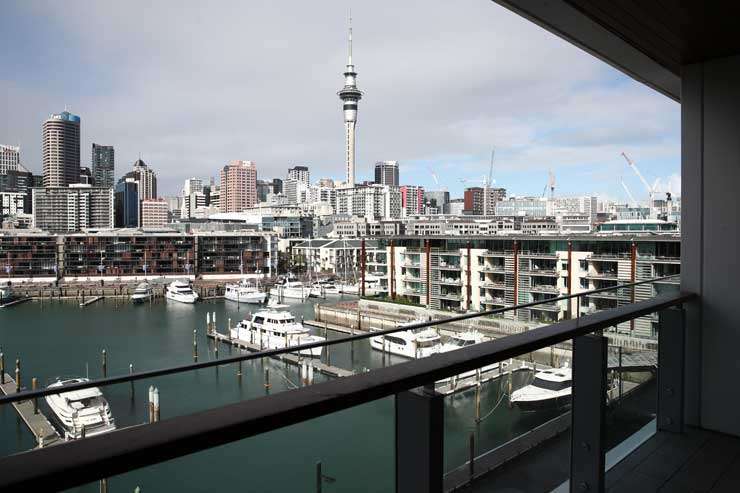While the city and fringe were once the domain of the younger generation and business, more of those in the 55-to-74-year-old boomer age group are setting up residence in Auckland's central city.
According to the latest census, boomers are moving into Auckland’s central city to live at a faster rate than other age groups.
It’s not just limited to the city itself, as they’re taking over immediate fringe suburbs of Ponsonby, St Marys Bay, Freemans Bay, Eden Terrace and Newmarket.
The 55-to-74 year old population growth was three times the average growth rate for the rest of the Waitemata Local Board, says David Norman, Auckland Council’s chief economist.
Start your property search
The numbers show Norman that the city centre is likely to be attractive to older people for similar reasons that younger people like living there:
“Lots of amenities, an easier lifestyle if it’s lock up and go, access to all the nice restaurants and things that the city has to offer.”

Baby boomers have the money to spend - and they want to enjoy the benefits of their wealth. Photo / Getty Images
Many of the 55-plus group will still be working so living in the city gives them access to their jobs, with a shorter commute and less yard maintenance.
Norman says the Census figures show that the boomer generation age group growing at a faster rate than the rest of the population in general. But, he says, they are growing faster still in the Waitemata Local Board area, which takes in the city centre and fringe suburbs, and even faster in the city centre in the five years since the 2013 census.
The data shows:
- The population growth in the city centre was 27 per cent for 55-to-74-year-olds, compared to 12 per cent for all ages.
- For the whole of the Waitemata Local Board, the population growth for 55-to-74-year-olds was 21 per cent, compared to seven per cent for all ages.
- And for all of Auckland, population growth for 55-to-74-year olds was 15 per cent, compared to 11 per cent for all ages.
“So, yes, a lot are moving into the CBD. In an area where there’s not been a lot of growth, a lot of that growth is from the 55 to 74s,” says Norman.
“The CBD and the broader Waitemata Local Board have seen significantly faster growth in that age group than they have in the rest of Auckland.”
The question arises around where city boomers will go as they get to their 80s, 90s and beyond.
John Collyns, executive director of the Retirement Village Association, says there is a possibility that one day inner city retirement village apartment blocks could form part of Auckland’s high rise landscape to accommodate aging boomers.
Multi-storey retirement village-style apartment buildings are already part of Brisbane and Melbourne, with the 19 storey Aveo Newstead in Brisbane being marketed as an integrated retirement living and aged care community within the Gasworks precinct and featuring luxury facilities and river and city views.
While that style of build is not the norm in Auckland, the city already has some multi-storey retirement villages outside the CBD but still in the city fringe, Collyns says.

Apartments in Auckland's Viaduct and Wynyard Quarter are becoming increasingly popular with baby boomers. Photo / Getty Images
People like to stay near where they live as they get older and so accommodation could be built in the city centre itself, he says.
“Based on the principle we build villages where people live so the local people can move in and, secondly, the availability of land at the right price, assuming those two things are met there’s absolutely no reason why they can’t happen in inner city Auckland.
“I think it’s very likely, provided the operator can acquire good land at the right price.”
Chris Newman, general manager of body corporate company Auckland Body Corporate, says many people in the boomer age range love apartment living - in fact, some empty nester clients he knows are deferring going into retirement villages by opting for an apartment building instead.
“Because of the safety, the community aspect. One client, she said she so values when she gets into the lift and she says hi to other residents and they have a chat, just in the lift.
“It seems so simple but some of these buildings are developing great communities and people want to be a part of that and put off going to a retirement village.”
Some of the new apartment buildings in town have shared spaces or libraries and gyms for these reasons.
“It’s a fascinating thing, actually, the demographics you see in some of these buildings. The Hereford (in Freeman’s Bay) is a great example.
“You’ve got more elderly people, you’ve got empty nesters, you’ve also got young couples and you’ve got single people. You’ve got a diverse mix of ages and demographics.
“It’s really cool to see a community form like that when there’s such a range of people.”
Empty nesters have often sold big homes in Remuera, Parnell or Herne Bay to free up equity to have an apartment and a lifestyle,” Newman says.
“These people are travelling a lot. There’s the fact they don’t have to do any maintenance on the exterior of the property or cleaning because everything’s taken care of in the common areas and I think people like that idea.
“There are so many advantages to it. The time in not having to maintain your property is such a massive one, and the security of just being able to leave two or three months at a time and know it’s secure and it’s locked up and everything’s going to be fine.”
Other developments in the city centre still being built include the Pacifica and Seascape residential towers, and these will offer shared spaces.
The boomer generation are also drawn to apartments at the Wynyard Quarter. The revamped waterfront neighbourhood in the heart of the city is expected to house 3000 people by 2030.
Developer Willis Bond & Co managing director Mark McGuinness says young and old share a desire to have a home that’s centrally located with amenities that suit their lifestyle.

Willis Bond is building the tallest Wynyard apartment building at 30 Madden St, Wynyard Quarter.
“Wynyard Quarter offers a unique urban waterfront location with quality builds and designs that are attractive to many people, regardless of age.”
While not commenting specifically on the inner city, an Auckland Council spokesperson said that in 2018 the council resolved to become an age-friendly city and to join the World Health Organisation’s Global Network of Age-friendly Cities and Communities.
“The over-arching aim is to ensure that Auckland is an inclusive place for older Aucklanders and for people as they age.
“A place where they are respected and valued in their community, are socially connected, can continue to contribute and participate and can ‘age in place’, with access to suitable housing options, transport and services that meet their needs.”
It’s projected that nationwide around one in 4.5 Kiwis - or 1,258,500 million people - will be aged 65-plus in 2036, an increase of 77 per cent.











































































